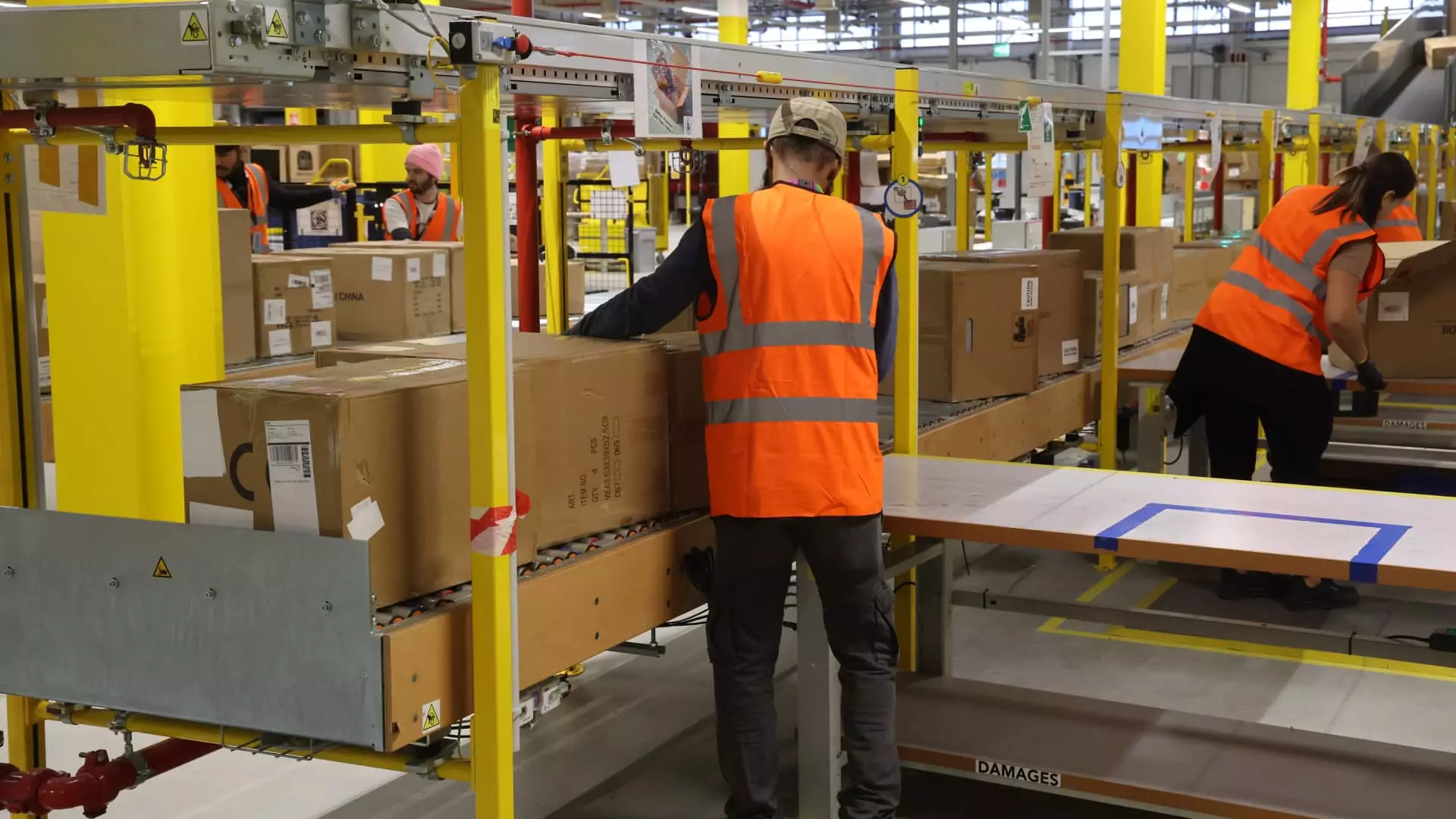Amazon’s recent milestone of deploying its millionth robot marks a significant leap forward in the shift towards automation-driven logistics. Unlike earlier phases where robots primarily assisted with basic tasks, Amazon now integrates advanced artificial intelligence, exemplified by its new “DeepFleet” system. This AI model orchestrates the entire robotic fleet, significantly enhancing the efficiency of warehouse operations. Such integration signifies a fundamental transformation within Amazon’s fulfillment centers, where human roles are increasingly being redefined or displaced.
While automation often promises increased productivity and cost savings, it raises pressing questions about the social and economic consequences. The drive to mechanize repetitive tasks is not merely about operational efficiency; it’s about a paradigm shift that could recalibrate employment landscapes worldwide.
Technological Progress vs. Job Security
For years, fears about AI replacing human workers have circulated in industry and media circles. But now, the reality is more tangible than ever. As Amazon’s robots become more sophisticated, capable of navigating complex warehouse environments and handling substantial weights, the threat of job displacement intensifies. Reports indicate that Amazon has already eliminated thousands of roles in recent years, mirroring a broader trend affecting the tech sector at large.
However, this narrative isn’t simply about machines taking human jobs with brute force. Amazon’s leadership claims that robots free up employees from strenuous or monotonous tasks, allowing them to develop technical skills and engage in more strategic activities. This optimistic view, while partially valid, glosses over the reality that many low-skilled workers are vulnerable to unemployment, especially if automation outpaces human retraining efforts.
The Contradiction of Progress and Workforce Downsizing
What’s particularly noteworthy—and perhaps disconcerting—is the explicit acknowledgment by Amazon’s CEO that automation will lead to workforce reductions. Andy Jassy’s statements about fewer jobs in some sectors echo the sentiments of many industry insiders who see AI as both a catalyst for innovation and a driver of job contraction.
This paradoxical scenario puts Amazon under the dual pressures of maintaining competitive advantage while managing societal responsibility. On one hand, the company invests heavily in robotics and AI, which are purported to complement human work. On the other hand, its recent layoffs suggest that automation is already making certain jobs redundant. The deployment of more robots coincides with a shrinking workforce, not an expansion, exposing the harsh trade-offs underlying technological progress.
The Ethical and Social Dilemmas
The broader implications extend beyond just Amazon. As AI and automation become central to corporate strategies, a societal debate about the nature of work intensifies. Should efficiency gains justify widespread unemployment? Can rapid retraining programs keep pace with technological innovation? These questions pit economic logic against social equity, and currently, the balance appears skewed toward profit at the expense of employment stability.
Moreover, the narrative often revolves around how robots “work alongside” humans, portraying automation as an aid rather than a replacement. Yet, empirical evidence and recent layoffs suggest a different reality—machines are gradually absorbing jobs that once relied solely on human labor. The challenge for policymakers and society at large is to navigate this transition in a way that mitigates hardship while harnessing the potential benefits of AI.
Is a Future of Prosperity or Precaution?
While Amazon’s advancements showcase the technological ingenuity and potential for productivity gains, they also serve as a stark reminder of a future where machines could dominate large swathes of the economy. The question isn’t just whether automation will eliminate jobs but how society can adapt sustainably.
The ongoing wave of layoffs across the tech industry underscores that many are already feeling the impacts. Consequently, embracing automation must be accompanied by strategic policies that prioritize retraining, education, and social safety nets. Without such measures, the risk is a growing inequality, with a shrinking middle class and a workforce displaced at an alarming speed.
Ultimately, Amazon’s robotic expansion symbolizes a pivotal moment: the dawn of a new industrial era driven by AI that promises unmatched efficiency but also demands critical reflection on human values and economic justice. Whether this revolution leads to widespread prosperity or social upheaval hinges on the choices made today.

